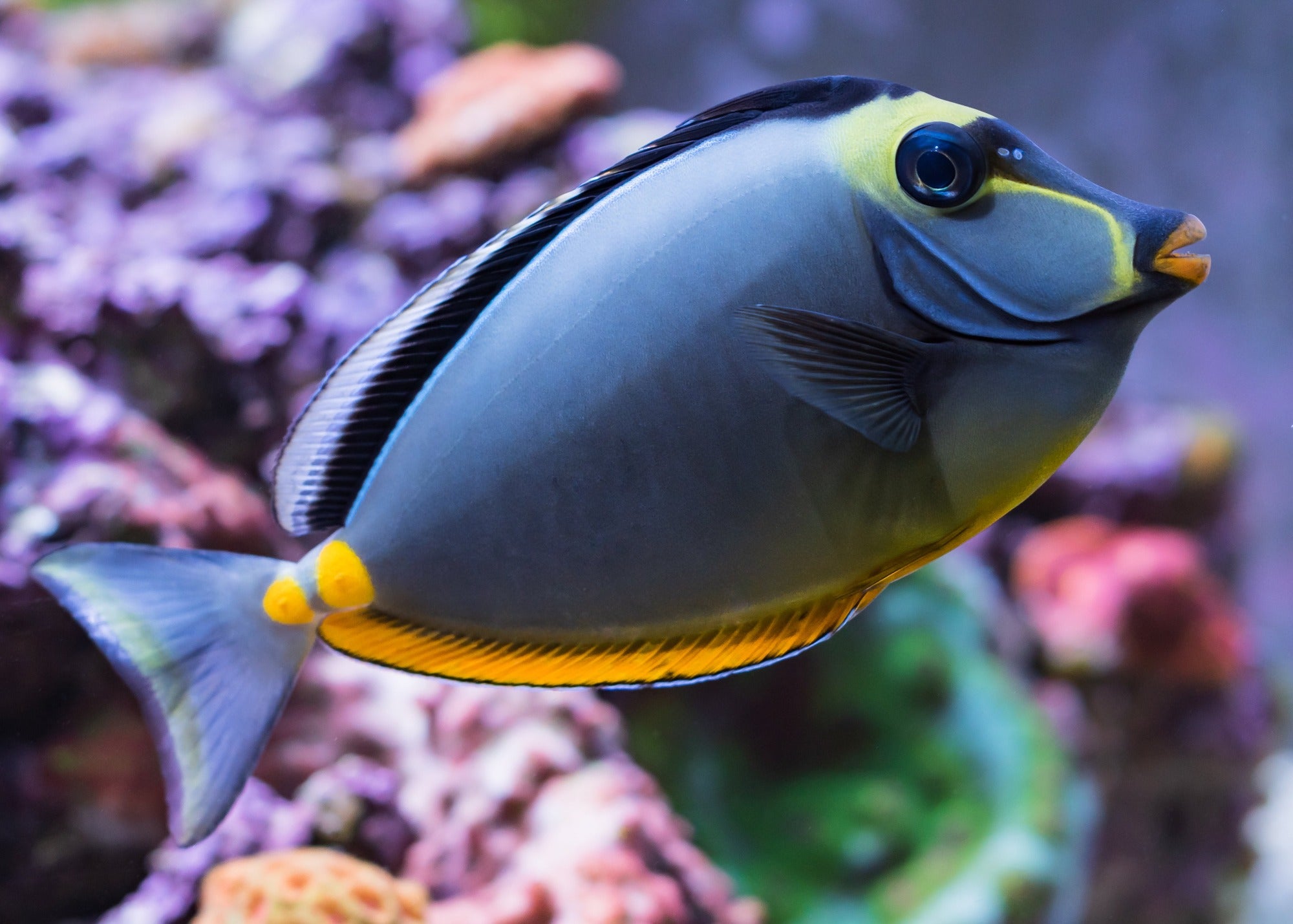|
View Marine Fish Compatibility Chart
Naso lituratus
The Naso Tang, scientifically known as Naso elegans, is a fascinating and highly recognizable fish species that belongs to the Acanthuridae family. This marine beauty is admired for its unique body shape, vibrant colors, and striking elongated snout.
Originating from the Indo-Pacific region, particularly found in the coral reefs of the Indian Ocean and the Pacific Ocean, the Naso Tang showcases a captivating combination of blue, yellow, and black hues. Its body is elongated and laterally compressed, with a prominent, elongated snout that extends well beyond its mouth.
This species is relatively larger in size compared to other tangs, reaching an average length of around 15-18 inches (38-46 cm) when fully grown. Its body is predominantly dark blue, with a vibrant yellow coloration on its face, fins, and the base of its tail. It also features a striking black vertical stripe running along its side.
The Naso Tang is known for its active and agile swimming behavior, gracefully maneuvering through the water column. It requires ample swimming space and a well-established reef or marine aquarium with plenty of hiding spots and live rock formations to mimic its natural habitat.
When it comes to feeding, the Naso Tang is primarily herbivorous, feeding on various types of algae and seaweed in the wild. In a home aquarium, it should be provided with a varied diet consisting of high-quality marine-based foods, such as algae sheets, spirulina flakes, and other herbivore pellets or flakes. Supplementing their diet with fresh vegetables, like blanched spinach or seaweed, can also be beneficial for their overall health and well-being.
Providing optimal water conditions is crucial for the well-being of the Naso Tang. They prefer a well-maintained aquarium with stable water parameters, including a temperature range of 72-78°F (22-26°C) and a pH level of 8.1-8.4. Regular water changes and the use of a good filtration system are essential to maintain water quality.
While the Naso Tang is generally peaceful, it may exhibit territorial behavior towards other tangs or similar-looking species. It is recommended to introduce them to the aquarium as the last addition to minimize aggression. Keeping only one Naso Tang per aquarium is usually advised, unless you have a very large tank with ample swimming and territorial space.
Overall, the Naso Tang is a captivating and highly desirable addition to any reef or marine aquarium. Its unique body shape, vibrant colors, and striking elongated snout make it a standout species and a favorite among aquarium enthusiasts. With proper care, a suitable environment, and a well-balanced diet, the Naso Tang can thrive and become a stunning centerpiece, adding beauty and elegance to your underwater world.
Use caution when housing with other Tangs or Surgeonfish. Similar shaped Tangs can be very aggressive towards each other and usually will not tolerate their own species at all. Tangs require a natural diet of seaweed and algae, which can be fed to them tied to a rock or by use of a veggie clip. This should be a done a minimum of 3 times a week. Tangs will also enjoy meaty foods with the other fish in your aquarium.
It is well known that tangs have a penchant for Marine Ich and other diseases due to their lack of slime coating. We highly encourage quarantining all fish, but especially Surgeon Fish. We do our best to quarantine all fish at Reef Chasers but there can be absolutely no guarantees.
Tang's of different species can typically get along if they are given ample living space and given that they are introduced at the appropriate size & time.
|

